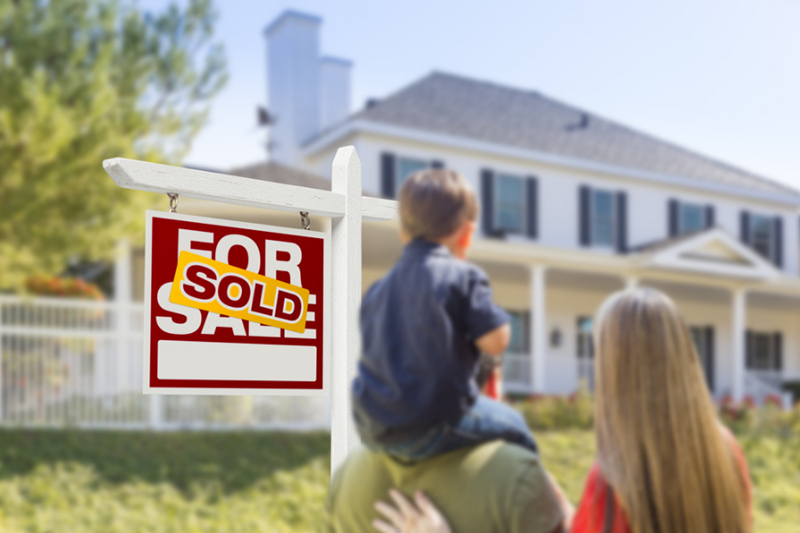
Photo from Canva
What you’ll find in this article:

Photo from Canva
The Challenges of Military Homeownership
Homeownership is a challenge for military buyers who endure regular PCS cycles. Buying a home with the semi-guaranteed plan of a three-year tour in one city is a purchase made with a giant leap of faith. For this reason, one of the most important questions you’ll have to ask is “Will I sell or rent my house after three years?” And because, you know, military life, a contingency plan is a good idea, too.
Determining if you’ll sell or rent dictates the improvements and changes you’ll make to the property. After all, perfecting the house to the point of pricing it too high for your neighborhood’s typical buyers and renters doesn’t offer a return on your investment.
As you read on about the differences between the strategies for selling or renting your home after living it for only a few years, you’ll note that many of the improvement qualities buyers prefer are also the amenities renters prefer. This is important to remember when contemplating selling or renting. The right projects will attract both crowds, and if priced correctly, will earn the most on your investment.
While hunting for a house that fits your needs right now, it’s also important to think of the resale appeal for later. Even though you hope to stay at this assignment for a few years, you’ll eventually transition again. When your next military orders come along, it helps to have a plan for what you’ll do with your home. Would you lease it or list it for sale?
Before we get into the details, let’s break down some pros and cons for both scenarios.
Pros of renting out the house:
- The property could appreciate.
- Tax benefits of owning an investment property.
- Rental income could offset some homeownership costs.
- A rental property can generate passive income.
Read also: 7 Tax Tips When Converting Your Home into a Rental
Cons of renting out the house:
- Cost of repairs and maintenance.
- Possible tax concerns over selling a property previously used as a rental.
- The tenants may not be conscientious about upkeep.
- Unreliable income if there’s a gap between tenants.
Pros of selling the house:
- Any equity in this home could be rolled into your new home purchase.
- The capital gain from this sale would be virtually tax-free if you put it toward another home purchase.
- The ease of owning only one home at a time.
Cons of selling the house:
- A qualified buyer may be hard to find.
- The house could sit empty after you PCS.
- Loss of potential appreciation if you instead held the investment for a few years.
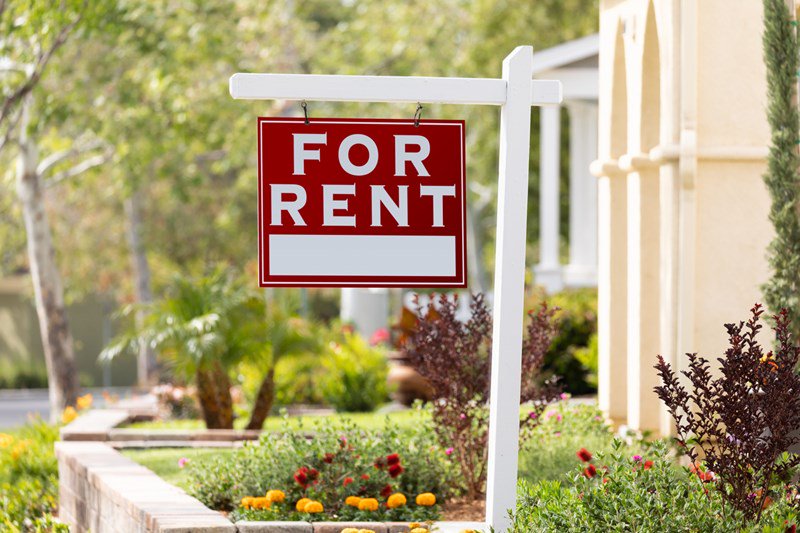
Photo from iStock.com/feverpitched
If You Plan to Rent Out Your Home After You PCS
Why are you planning to rent your home? Is it because it's not a good time to sell in your market, i.e., prices are low and inventory is high? Or, are you holding on to the property because you’ll ultimately return, either to retire or for another PCS cycle? The answers to these questions create the framework for the improvement plan for your home.
Is a Rental Property the Right Investment for You? provides help for making the best decision.

Photo from Canva
Home Improvements for a Rental Home
Required Standards to Maintain
If you’re renting out property, you are obligated by law to meet health and safety standards throughout the home. The specifics are generated by local governments. You’ll have to educate yourself on what your county and city mandates, but at minimum, you’ll need to correct problems with structural elements of the home, including floors, stairs, walls, and the roof.
These systems are also required to be operational:
- Electrical
- Heating, ventilation, and air conditioning
- Plumbing
- Remediation of environmental toxins such as mold and lead paint
- Extermination of rodent infestations
- Reasonable barriers against crimes: a working front door with a lock and landscaping that restricts the potential for hiding places for criminals.
Rental Home Improvements That Earn Value
Part of your rental property preparation is defining the ideal renter you’d like to have occupy your home. These characteristics determine the type of improvements, upgrades, and additions that will draw in your preferred price point.
Note that Fair Housing Laws prohibit discrimination against protected classes of potential renters. It's unlawful to refuse a tenant for unfounded reasons such as race, class, or religion. Learn more:
back to top
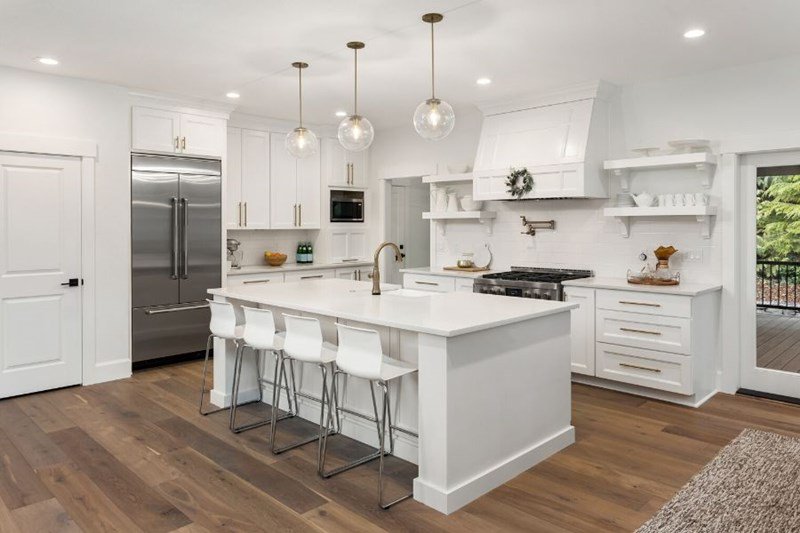
Photo from Canva
What Tenants Want in Your Rental Property
Renters typically want what buyers want, but many will put up with a few shortcomings like dated paint and wallpaper for a reduced rent price, knowing they’ll live there temporarily. Most of the following changes will not only entice tenants who prefer to pay top dollar for a well maintained property, but they'll enhance a future sale or improve your quality of life upon moving home.
- Updated flooring. Where dated, smelly carpets deter renters quickly, hardwood and engineered wood planks continue to be the most popular choices in flooring and are more affordable than ever. The clean up and durability of wood-like flooring is far more valuable than cheap carpeting.
- Modern and functioning kitchens and bathrooms are also on top of the list to increase your home’s value. If you plan to eventually install stone countertops into the bathroom and kitchen, either to sell or enjoy for yourself, consider the installation earlier to capture renters’ attention and higher rent price. Wear and tear on natural stone, such as granite, is nominal over a 2-3 year lease term. The same is true for updated appliances and small hardware, like faucets.
- Easy to care for and minimal landscaping is a win-win for tenants and homeowners. The garden of your dreams can wait until you can care for it on a day to day basis. Most renters are not interested in investing time and money into yard work. Need inspiration? Read 4 Landscaping Ideas for Instant Curb Appeal.
- The majority of renters prefer a fenced yard (a privacy fence is even better) for the safety of their family, including their pets.
- Consider affordable, smart, or green home improvements that are attractive to renters, such as a wireless programmable thermostat, LED light bulbs, and Bluetooth keypad door locks. They’ll appreciate the cost per month savings and the benefit of modern technology not usually found in a rental.
Decorating with Tenants in Mind
Certainly your home should be comfortable and enjoyable while you live there, but decorating choices may look different if your long game plan is to accommodate renters or sell after three years.

Photo from Canva
Personal and specific tastes in paint and wallpaper are two examples of decor that tend to be overly personalized if the intention is to move on. The goal is to cater to the masses, and to draw in the best prices for your rental.
The colors beige, greige, and off-white are offensive to some homeowners who view this category of paint as boring and without personality. But the easiest way for potential renters to envision themselves and their belongings in the home is against a neutral backdrop.
If three years is just too long to live with bland paint, choose a color that has neutral tendencies, such as blue/gray, green/blue and a light brown/buff. These colors accommodate most decorating themes.
Skip custom fabric window coverings. These are taste specific, expensive, and probably the first thing a renter will remove and store after move-in. There are affordable, yet high quality, alternatives such as plantation shutters which are widely available at home improvement stores.

Photo from Canva
Renters Insurance
Not only will your homeowners insurance convert into rental property insurance, it's highly advisable to bind your tenants to lease language that states they will purchase renters insurance to cover their belongings in case of a disaster.
Coverage for the Tenants
Remind your tenants the landlord’s insurance policy doesn't cover their belongings and requiring them to purchase a policy is protection for everyone. Check out this common myth about renter’s insurance from Renters and Landlord Insurance: Don't Get Burned!:
"If someone gets hurt in my house/apartment, the landlord is liable. Not necessarily true: This is a question of liability. Should your cable guy trip on the front walk, he will probably sue your landlord. But if the repairman takes a swan dive over a poorly positioned coffee table inside your apartment or if your Doberman decides that his ankle looks like a chew toy, it will not be your landlord's problem. It will be yours."
Learn more about renters insurance: 5 Reasons You Need Renters Insurance.
Coverage for the Landlord and Rental Property
Typical coverage protects the house and outbuildings, like a garage, from weather and fire damage. More inclusive and expensive policies envelop scenarios that protect the owners from income loss if the house is inhabitable or if there is a dispute which requires legal action. The insurance provides liability coverage for injuries, legal fees, and medical costs if necessary.
Records to Keep
Set your renters up for success by assembling the information necessary to keep your house running smoothly. They’re more likely to care for the property the same way you would if they’re informed and prepared. The simplest way to offer the information is to create a binder or digital collection of important documents.
Find everything you need listed in Essentials for Your Rental Home Binder.

Photo from Canva
1) Warranties and Manuals
Include home warranty policy numbers and contact information, appliance guides, landscaping system instructions, and smart home features.
2) Maintenance
Add the names and numbers for preferred handyman and vendors that supply home services such as a plumber and electrician if they’ll be making the contact for this. Also include the maintenance plan schedule that was agreed upon in the lease which states how often, and when, you expect house chores to be done. These items normally include lawn care, gutter cleaning, chimney sweeps, and window washing.
3) Rental Property Tax Records
As a rental property business owner, taxes will become a part of your overall tax preparation for the year. Choose a system for documenting the property’s income and expenses. A simple log on a spreadsheet usually suffices for one property, but there are more sophisticated management systems if preferred. Receipts pile up quickly if you don’t have a digital way to record them. At minimum, take pictures of the receipts and store them for later.
back to top
If You Plan to Sell Your Home After Three Years
An active, open line of communication with an agent is the simplest way to plan for a future sale. They’ll guide you through which improvements are most valuable in your area and offer monetary guidelines that offer the biggest return on your investment without pricing out of the local market.
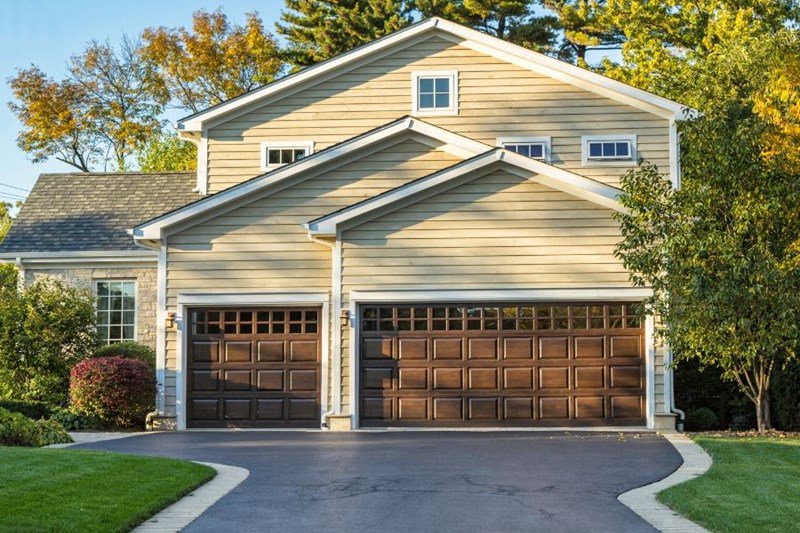
Photo from Canva
Home Improvements That Earn Value
If you’ve purchased the property to strictly earn money on your future sale, black and white figures demonstrate which projects are worth the time and money. The 2022 Cost vs. Value Report from Remodeling is a solid source for gauging which improvements are the best investment in your area.
Right now, Remodeling reports that 90% of the projects with the best return are geared to the exterior of the home:
- Garage door replacement
- Manufactured stone veneer
- Siding replacement
- Window replacement
- Deck addition
- Entry door replacement
The only interior project mentioned in the top 10 was a minor kitchen remodel at $28,279 that has a Resale value of $20,125 with a 71.2% cost recoup.
Check the report for your region and state because location does make a difference, especially as it applies to exterior improvements and weather. This information is in conjunction with hyper-local information for your city and neighborhood. In the end, meeting buyer demands closes the sale.
Learn more:
Decorating with a Home Sale in Mind
For military homeowners, the idea of decorating any way you want is often a large part of the decision to buy a home. Without the restrictions of a rental, the options are endless—unless you plan to sell the home in three years and earn a profit.
Of course, you should make any changes you prefer while living in your home. Always wanted a 1950’s inspired kitchen with red accents? Go for it, but know that a limited pool of buyers will appreciate the aesthetic. You’ll likely be repainting the kitchen Benjamin Moore’s Simply White while packing for the next PCS. You get to decide how much personality you want to live with, but ultimately catering to your buyer’s tastes is what brings the desired asking price.
Decorating with selling in mind is similar to decorating with renting in mind. You’ll want to add finishes that lean toward a high-end look and appeal to the masses to achieve maximum profit on the sale.
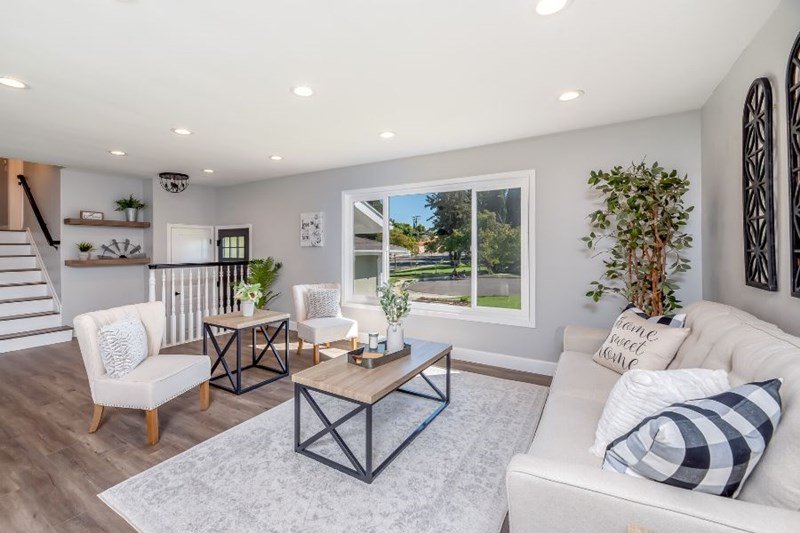
Photo from Canva
Home buyers continually ask for:
- Light, bright, and airy: Update light fixtures and install breezy window coverings that offer privacy.
- Open concept: Remove non structural walls that inhibit sight lines and obstruct flow.
- Move-in ready: Immaculately clean, neutral paint and limited carpeting. Hardwood flooring is overwhelmingly preferred, as are stainless appliances and natural stone countertops.
Energy Saving Options
Newer homes are outfitted with energy efficient details such as such as low-emissivity glass windows. But there are opportunities to add additional savings after the home purchase. Your future buyers will be impressed with the savings they’ll receive from energy efficient upgrades to the furnace, boiler, and air conditioner.
You can safely assume if these systems are over 15 years old, there’s room for efficiency improvement. New thermostats, ceiling fans, and additional insulation also increase energy savings. Think carefully about intense updates such as solar paneling. These attract a particular set of buyers your market may not support.
Keep in mind that some energy saving features may also reduce homeowners’ insurance costs. If the upgrade prohibits damage and future payouts from the insurance provider, the chances are higher for a reduced rate. Typical options include water shut-off devices, a new roof, and superior windows.
A three-year PCS timeline strains the home buying process for military families. To make the most of the purchase for such a short time, create a plan. Both a sale and a conversion into a rental property are possibilities, but your future goals predict which is the preferred exit. If the primary goal is to reach maximum profit from the final sale or through monthly income, carefully consider which improvements and action plans fulfills this intention.
By Dawn M. Smith
Selling your home? Download our free guide below!

.jpg)
back to top